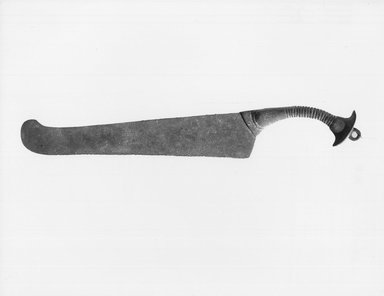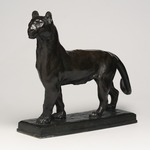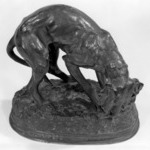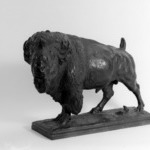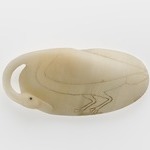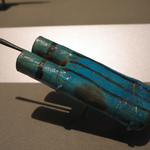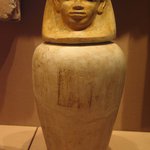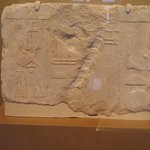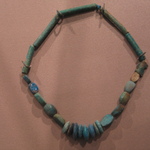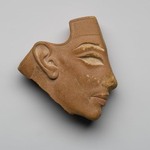

Ceremonial Saw in the Shape of a Ma`at-Feather, ca. 1353–1336 B.C.E. Bronze, 12 3/8 x 1 5/8 in. (31.5 x 4.2 cm). Brooklyn Museum, Charles Edwin Wilbour Fund, 65.133. Creative Commons-BY (Photo: Brooklyn Museum, CUR.65.133_erg456.jpg)
Ceremonial Saw in the Shape of a Ma`at-Feather
Egyptian, Classical, Ancient Near Eastern Art
On View: Egyptian Orientation Gallery, 3rd Floor
The unusual shape of this saw’s handle is a reproduction of a Ma`at -feather (an ostrich plume signifying “truth”). This shape suggests that the saw was used for ceremonial purposes, such as preparing meat for sacrifice to a god.
MEDIUM
Bronze
DATES
ca. 1353–1336 B.C.E.
DYNASTY
Dynasty 18
PERIOD
New Kingdom
DIMENSIONS
12 3/8 x 1 5/8 in. (31.5 x 4.2 cm) (show scale)



COLLECTIONS
Egyptian, Classical, Ancient Near Eastern Art
ACCESSION NUMBER
65.133
CREDIT LINE
Charles Edwin Wilbour Fund
PROVENANCE
Archaeological provenance not yet documented; by 1965, acquired by Kenneth John Hewett of London, England; October 13, 1965, purchased from Kenneth John Hewett by the Brooklyn Museum.
Provenance FAQ
CATALOGUE DESCRIPTION
Knife-like cutting instrument in bronze consisting of a blade in shape of the m,.t-feather with a finely serrated edge and of a handle in the form of a curved papyrus bundle with umbel, the latter bearing a ring of suspension; all in one piece.
Condition: Good although slightly corroded and discolored in spots. Traced of bronze disease.
EXHIBITIONS
MUSEUM LOCATION
This item is on view in Egyptian Orientation Gallery, 3rd Floor
CAPTION
Ceremonial Saw in the Shape of a Ma`at-Feather, ca. 1353–1336 B.C.E. Bronze, 12 3/8 x 1 5/8 in. (31.5 x 4.2 cm). Brooklyn Museum, Charles Edwin Wilbour Fund, 65.133. Creative Commons-BY (Photo: Brooklyn Museum, CUR.65.133_erg456.jpg)
IMAGE
overall, CUR.65.133_erg456.jpg. Brooklyn Museum photograph, 5/20/2008
"CUR" at the beginning of an image file name means that the image was created by a curatorial staff member. These study images may be digital point-and-shoot photographs, when we don\'t yet have high-quality studio photography, or they may be scans of older negatives, slides, or photographic prints, providing historical documentation of the object.
RIGHTS STATEMENT
Creative Commons-BY
You may download and use Brooklyn Museum images of this three-dimensional work in accordance with a Creative Commons license. Fair use, as understood under the United States Copyright Act, may also apply.
Please include caption information from this page and credit the Brooklyn Museum. If you need a high resolution file, please fill out our online application form (charges apply).
For further information about copyright, we recommend resources at the United States Library of Congress, Cornell University, Copyright and Cultural Institutions: Guidelines for U.S. Libraries, Archives, and Museums, and Copyright Watch.
For more information about the Museum's rights project, including how rights types are assigned, please see our blog posts on copyright.
If you have any information regarding this work and rights to it, please contact copyright@brooklynmuseum.org.
RECORD COMPLETENESS
Not every record you will find here is complete. More information is available for some works than for others, and some entries have been updated more recently. Records are frequently reviewed and revised, and we welcome any additional information you might have.

